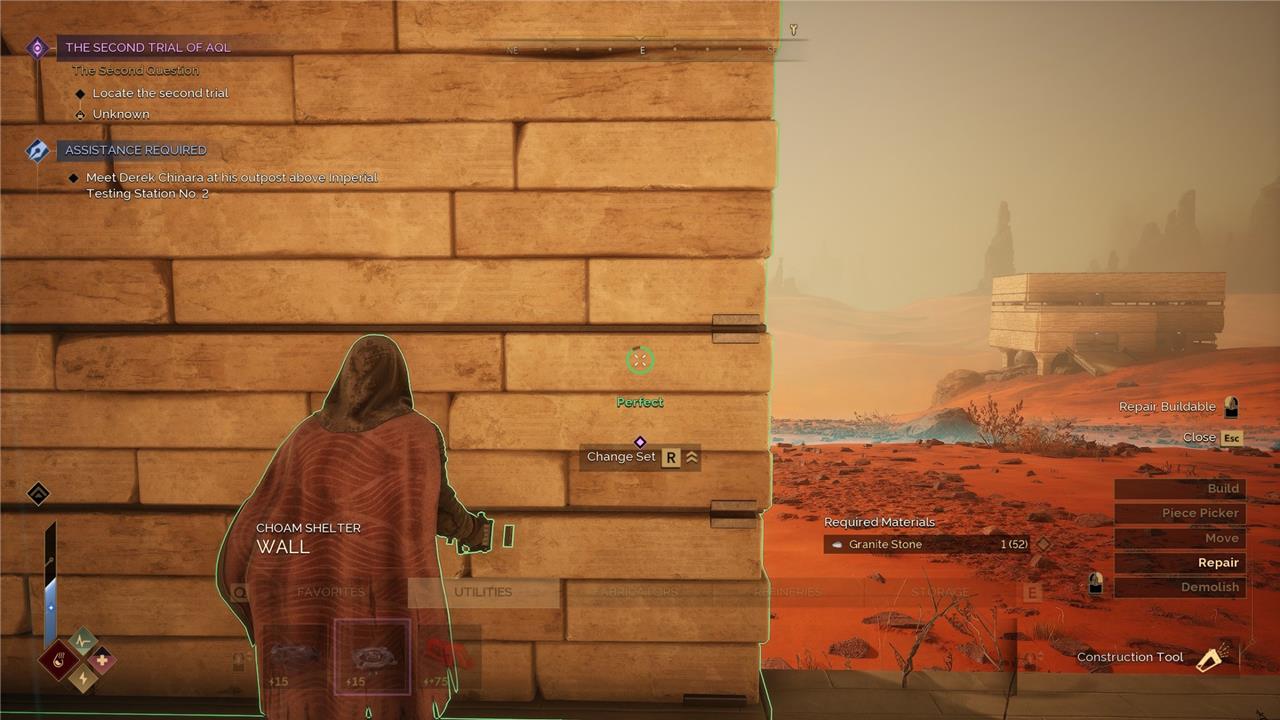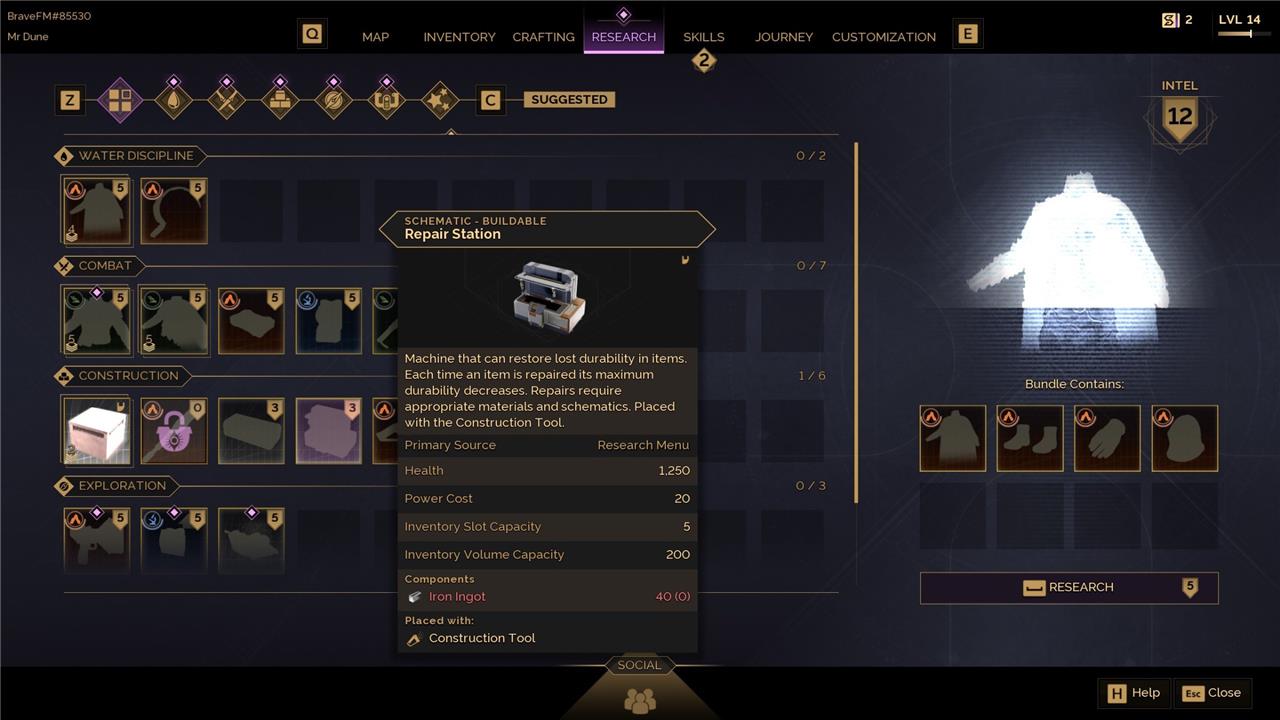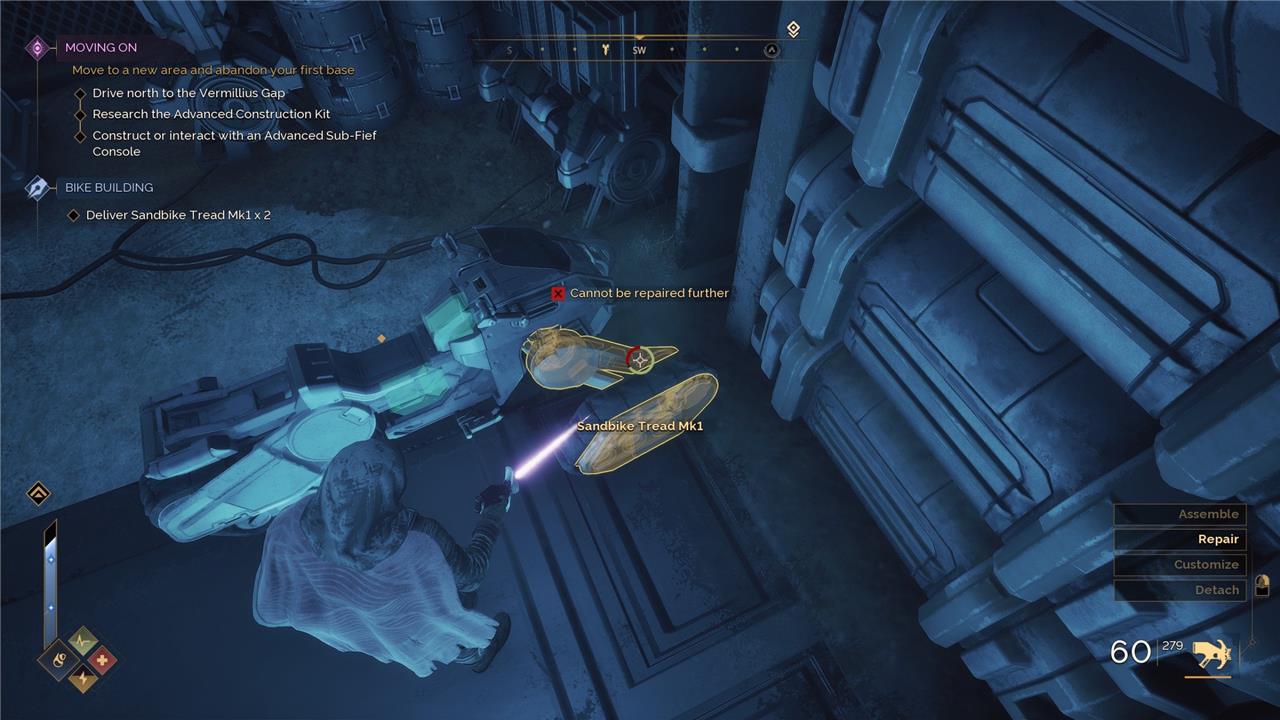Beneath the relentless storms of Arrakis, survival in Dune: Awakening hinges on more than just cunning-your battered vehicles, worn weapons, and even the walls of your shelter gradually succumb to the planet’s harsh embrace. Discover the essential methods, hidden tools, and hard-earned strategies that will keep your gear-and your hope-intact amid the sands.
Below, we explain how to repair items in Dune: Awakening, including equipment, buildings, and your vehicles.
How to repair buildings in Dune: Awakening
To repair buildings in Dune: Awakening, equip the Construction Tool and switch it to repair mode, typically by right-clicking to swap modes. Then, aim the tool at the damaged section of your building and hold the left mouse button to restore it. Building repair uses the same tool required for initial construction and does not require special materials beyond the tool itself. Note that building decay mainly occurs if your Sub-Fief Console runs out of power, so ensuring your base is powered up will minimize repair needs.

Repairing buildings is a much more straightforward process than handling other types of worn-down items, and you typically won’t have to repair them as frequently as you will equipment or vehicles. Building wear happens only if an active sub-fief isn’t present, such as if you’re moving bases and removed the sub-fief before demolishing buildings or if you run out of power. Then, buildings will degrade rather quickly. You never want to be in a situation where your sub-fief isn’t active, so in almost all cases, you won’t have to worry about repairing buildings.
If you do need to, though, here’s how to do it. Equip your construction tool, and right click to change the mode to “repair.” Point it at the damaged construct, and hold the left mouse button until the item is fully restored.
How to repair items in Dune: Awakening
To repair items in Dune: Awakening, you must first unlock and construct a Repair Station by researching it through the Construction tab in the research menu, which requires about 40 Iron Ingots to build. Once your Repair Station is set up, interact with the station to access a menu of your damaged items. Select the items in need of repair and provide the necessary materials to restore their durability. Note that repairing items reduces their maximum durability, so while you can restore their function, items will gradually become less durable with each repair cycle.

Items such as weapons, tools, and equipment require a specific refinery if you want to make them like new again, the aptly named Repair Station. You’ll have the otion to unlock this shortly after reaching the Vermillious Gap. The schematic requires five research points, and it takes 40 iron ingots to create, the latter of which means you’ll need to fabricate a sturdier cutteray tool to mine iron, unless you got a lucky drop from somewhere and have one on-hand already.
Drop your damaged goods in the repair machine, wait for it to do its thing, and voila. Good as new.
Items such as weapons and tools degrade through use, so you’ll be visiting the repair station frequently. Make sure to build it as soon as you can.
How to repair vehicles in Dune: Awakening
To repair vehicles in Dune: Awakening, you’ll need both a Welding Torch and Welding Wire, which can be crafted using salvage and copper ingots through a Fabricator. Equip the Welding Torch, switch it to the “Repair” mode, and then target the specific damaged part of your vehicle. As you hold the repair function over the faulty area, the Welding Wire is consumed to restore functionality. However, repeated repairs eventually diminish a part’s maximum durability, indicated by growing red sections in the repair UI; when fully degraded, parts must be replaced or detached and restored at a Repair Station for complete refurbishment. Always keep an ample supply of Welding Wire handy, as repairs consume multiple units, especially for significant damage or contract-ready vehicles.

The welding tool you use to create vehicles also has a repair function, but Dune: Awakening doesn’t teach you how to use welding tool ammo or even say what it is. You need Welding Wire to use it, which you can create using the Fabricator machine or purchase from most merchants for a low sum. A nearly complete repair requires a few dozen pieces of wire, so you’ll need a fair amount of it on hand.
“Nearly” is key there, as damaged vehicle parts need to be tossed in the repair machine to be fully like new again. However, the welding tool’s repair function is enough to get a part in working order or in good enough shape to deliver as part of a contract, so don’t sweat it if the part isn’t in peak condition.
The damaged piece must be attached to a vehicle before you can repair it with the welding tool. If you find a damaged part that you want to use yourself or for a contract, you’ll have to detach the old one, attach the damaged one, and then fix it.
Vehicle parts become damaged when you leave them in unsheltered locations, so once you build your first sand bike, make sure you also build a shelter at your base to park it in. You’ll sometimes come across a useful or rare vehicle part while scavenging and find that it’s damaged. Damaged parts can’t be turned in if they’re required for a contract.
Discover the secrets to repairing vehicles efficiently in Dune Awakening
To repair vehicles efficiently in Dune: Awakening, you need two core items: a Welding Torch and Welding Wire. These are essential for vehicle maintenance and available early in the game’s progression, starting from the Sandbike Mk1 Assembly.
Efficient Repair Steps:
-
Craft or obtain a Welding Torch (sometimes called a welding gun) and stock up on Welding Wire, which you can craft in your inventory or at a crafting station.
-
Approach your vehicle and equip the Welding Torch. Interact with your vehicle and select the “Repair” option, typically by right-clicking and choosing the repair mode.
-
Target the damaged parts: The game displays a damage indicator on each vehicle part. Orange or red highlights mean those parts need repair. Hold down the repair action (often left-click) on the damaged component until the repair circle fills up.
-
Repeat for each part that needs repair, watching for parts that may be too worn to repair, in which case you’ll need to replace them.
-
Pro tip: Avoid excessive damage from rough driving (like large jumps), as repairing does not restore parts indefinitely-over time, heavily used parts must be replaced.
Advanced tip:
-
You unlock improved repair efficiency by investing in the Mechanic Skill Tree, specifically by putting a skill point into the Vehicle Repair Skill. This can improve the effectiveness and cost of repairs as you progress.
In summary, always carry enough Welding Wire, monitor your vehicle’s condition via the in-game UI, and repair parts as soon as they show damage to avoid costly replacements and stay agile on Arrakis.
What is the most efficient way to gather welding wire for repairs in Dune Awakening
The most efficient way to gather welding wire for repairs in Dune: Awakening is to craft it directly from your inventory using basic materials, primarily salvaged metal parts (often called “Scavenged Metal”). You do not need a workbench; simply access your character’s crafting tab and use five salvaged metal parts to create a spool of welding wire, which takes only a few seconds to craft. This allows you to stockpile welding wire while exploring or out in the field, ensuring you’re always prepared for vehicle repairs.
Additional efficient methods:
-
Bulk resource farming: Salvaged metal is found scattered around the world-regularly loot scrap piles, containers, and enemy drops for a steady supply.
-
Buy from vendors or player exchange: Welding wire can also be purchased from specific merchants in major trade posts (like Tyg Rolsum in The Anvil) for 1 Solari, or bought via the player-run Exchange for fluctuating prices, which is sometimes faster than manual farming if you have excess currency.
-
Trade with other players: Social hubs and villages facilitate quick trades, especially if you need larger quantities fast.
In summary, craft welding wire from metal scrap on the go for the best self-sufficiency, but use shops or player trades for instant large quantities if you’re short on time or materials.
